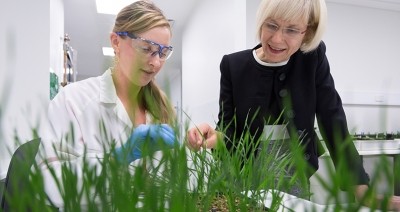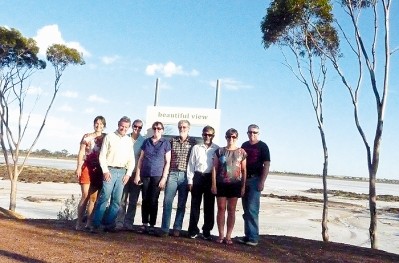Sustainable farming: Bi-cropping could extract phosphorus reserves

Fluctuating costs and availability meant fertilizers were becoming unaffordable, said the team of scientists behind a £1.2m ($2m) three-year bi-cropping project funded by the BBRSC. They suggested collaborative root systems could offer a sustainable, long-term solution.
Lead scientist Dr Tim George from the James Hutton Institute told Milling & Grains the project was focused on increasing the amount of phosphorous in the soil.
Phosphorus was an essential mineral for crop production and naturally found in all soil types, he explained, but only a fraction was available in the soluble inorganic form required by cereal crops, like wheat. The vast majority, he said, was lost to the environment.
“Typically there could be 1,000 units of phosphorus in the soil but perhaps only 10 units are freely available for crop uptake – so about 80-90% is unavailable.
“The idea of this project is to try to break into that ‘bank’ of phosphorus. Even if we can only break into another 10 to 20 units it will massively increase the amount available to crops,” George said.
Yield increases dependent on several factors
He said the team was currently investigating undersowing cereal crops with various legumes. “But obviously you wouldn’t get any product from the legume. Undersowing takes resource so we’re looking at how to optimize it,” he said.
Wheat could potentially be unsown with a legume such as clover, which was a nitrogen fixer and “pretty good” at releasing phosphorus, he said.
German seed breeder KWS Kielder was currently testing a coupling of maize with beans to map out the interaction and hopefully improve efficiency, explained George.
Pre-project tests had also shown yield increases of up to 100% in barley, but results were entirely dependent on the crop trait, coupling legume and soil type.
“In theory as long as the soil is phosphorus deficient then bi-cropping should be effective. Grasslands being ploughed up for cereal farming would have a good store of organic phosphorus and would be really good soils for this kind of intervention.”
Phosphorus fertilizers unsustainable
Fertilizers were considered the main tool used to unlock additional phosphorus reserves in soil, but George said vast quantities of fertilizer inputs were lost in the ecosystem each year, and availability was economically and environmentally unstable.
“From one year to the next only 20% of the phosphorus deposited through fertilizers can be used by crops, meaning 80% disappears in the system. So it is a really inefficient way of providing phosphorus.”
Political instability in phosphorus-rich nations like North Africa would also inevitably increase costs in the future, he added, so implementing sustainable farming regimes could be the only way to guarantee food security.
“The cost of phosphorus increased seven-fold in 2008 due to the increase in oil prices. These kinds of spikes and volatility in the market are predicted to increase in the future.”
“There are already lots of political drives to reduce input of fertilizers and bi-cropping is a viable option for farmers to help them maintain yields - and potentially even increase them – without using fertilizers.”
Balancing act
Bi-cropping could also relieve the environmental pressures from too much phosphorus in the soil as the overflow seeps out and pollutes standing bodies of water (like lakes or ponds), George said. Phosphorus propagates algae formation, he explained, effectively stripping out the oxygen and killing every other living organism in the water.
“The accumulation of large amounts of phosphorus in soils could lead to big shifts in biodiversity. By managing the phosphorus bank more effectively we are essentially avoiding losses and damage to the environment.”
Conversely releasing too much phosphorus could damage the soil structure, he added, resulting in losses of organic matter and increased soil erosion.
“We have to be aware that we need to keep the quality of the soil in balance while squeezing out as much of this absorbed phosphorus as we possibly can. It is a bit of a balancing act.”
Bi-cropping was already widely used in developing countries where there was less access to fertilizers and China was testing the system as part of its future farming strategy.
“We’re looking at a changing future. Environmental change is on the doorstep in terms of climatic factors and a big environmental shift in resource availability. Phosphorus is a key example.”









